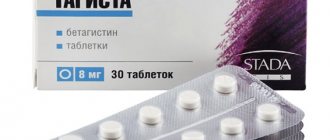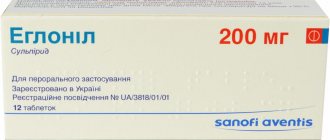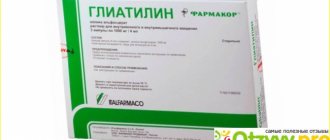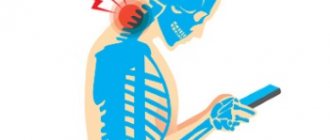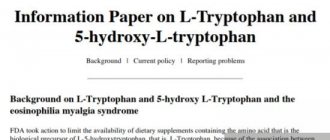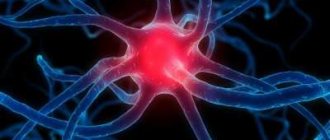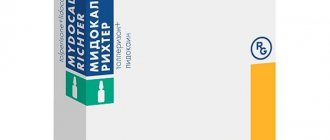Prohibited during pregnancy
Prohibited during breastfeeding
Prohibited for children
Has restrictions for older people
Has limitations for liver problems
Has limitations for kidney problems
For insomnia and constant stress, doctors often recommend taking medications (hereinafter referred to as medications) that help eliminate anxiety and improve sleep. One of the most effective medications is Alprazolam.
This drug is characterized by a pronounced hypnotic effect. In addition, according to the instructions for use, Alprazolam effectively relieves symptoms of depression. Before taking the medicine, you should consult a specialist and read reviews from patients who have taken the medicine.
Benzodiazepine derivatives
The most famous and widespread tranquilizers, which have a pronounced antiphobic and anti-anxiety effect. They are divided into 3 subgroups: drugs with long, medium and short periods of action.
Long-acting anxiolytics (Phenazepam, Chlordiazepoxide, Diazepam) are strong drugs and have many unwanted side effects that overshadow their advantages and lead to the development of serious complications, so they are rarely available without a prescription.
Medium- and short-acting drugs (daytime tranquilizers) have fewer side effects and are safer, and can be purchased without a prescription, but are still recommended to be taken only after consulting a doctor.
Medium-acting drugs
Alprazolam (Xanax, Alzolam, Helex, Zolomax)
The active ingredient is alprazolam.
It is used as a remedy that most actively eliminates panic attacks and acts as a vegetative stabilizer. The drug is also prescribed for worsening sleep, decreased appetite, and loss of interest in the outside world.
At the beginning of treatment, a minimum dose is prescribed, which varies from 0.25 to 0.5 milligrams 3 times a day, then gradually the dose can be increased to a maximum of 4.5 milligrams. For weakened and elderly patients, the initial dose is 0.25 milligrams 2-3 times a day. The dose must be reduced gradually to avoid withdrawal syndrome.
Side effects: possible rash, itching, urinary incontinence, development of leukopenia, anemia, impaired renal function, etc.
Lorazepam (Lorafen)
Available in tablets, dragees; active ingredient – lorazepam.
The medicine has a medium duration of action, has a hypnotic and powerful antiphobic effect, is effectively used for all types of neuroses for the treatment of senestopathic, hypochondriacal disorders, and helps stabilize the autonomic nervous system.
Adults and adolescents take 0.5-4 milligrams 1-3 times a day. The maximum daily dose should not exceed 10 milligrams.
Side effects: ataxia, muscle weakness, dizziness, dysphagia, dry mouth, itching, skin rash.
During pregnancy, use only according to strict indications and always under the supervision of a doctor. Use with caution in case of impaired renal function, suspected sleep apnea, shock, epilepsy, or lung diseases.
Medazepam (Rudotel)
The active ingredient is medazepam.
Eliminates psychoneurotic tension, feelings of fear, anxiety, motor agitation, and increased fussiness. The medicine also stabilizes the functioning of the autonomic nervous system, helps restore emotional balance and an adequate assessment of one’s own illness.
Tablets are taken 2-3 times a day, starting with a dosage of 5 milligrams; gradually increase the dose to 30 milligrams per day. It is rarely allowed to take 40 milligrams of the drug. Elderly people and adolescents – 10-20 milligrams per day; children aged 10 years and older – 2 milligrams per day. The duration of therapy is no more than 60 days. After a month, the course can be repeated.
Side effects: dry mouth, drop in blood pressure, disinhibition, depression, loss of orientation, confusion, dyspeptic disorders.
For respiratory failure, intraocular hypertension, and cerebellar ataxia, Medazepam tablets are prescribed with caution.
Daytime tranquilizers
Drugs with a predominant anti-anxiety effect and minimally expressed sedative, muscle relaxant and hypnotic properties.
The following medications can be purchased without a doctor's prescription:
Gidazepam
The active ingredient is gidazepam.
Eliminates irritability, migraines, calms, softens withdrawal symptoms in alcoholism, improves sleep.
Take 20-50 milligrams orally 3 times a day. The average dose for the treatment of patients with neurosis-like and neurotic disorders is 60-150 milligrams per day, migraines – 40-60 milligrams. The course of treatment is from 7 days to 1-2 months.
Side effects: drowsiness, slower speed of motor and mental reactions, drug dependence, gait disturbance.
Oxazepam (Nozepam, Tazepam)
The active ingredient is oxazepam.
Prescribed for neuroses, psychovegetative disorders (for example, disorders in women associated with menopause or severe premenstrual syndrome). As part of complex therapy, the medicine is used for reactive depression. The dosage is set depending on the indications, the age of the patient and the development of the therapeutic effect.
The daily dose varies from 10 to 120 milligrams.
Side effects: fatigue, difficulty concentrating, dulling of emotions, paradoxical reactions (fear, hallucinations, insomnia, etc.), nausea, vomiting, allergic reaction, urinary retention, kidney dysfunction.
Prazepam (Demetrin)
The active ingredient is prazepam.
The medicine stabilizes affective reactivity, normalizes sleep, improves mood, reduces tension and fear, without reducing concentration and reflexes. In addition, the tablets help relieve functional autonomic disorders in various psychosomatic disorders.
For adults, the recommended daily dose is 20 milligrams, that is, 2 tablets (0.5 tablets in the morning, 0.5 at lunch and 1 in the evening). For children from 3 to 12 years old, the medicine is prescribed at 10-15 milligrams, that is, 0.5 tablets 2-3 times a day.
Side effects: feeling a little tired, dizzy.
Tofisopam (Grandaxin)
Available in tablets and powder; active ingredient – tofisopam.
The drug is prescribed for the treatment of autonomic disorders, decreased activity, neuroses, and severe stress. Also for menopause, premenstrual syndrome, myasthenia gravis, as part of complex treatment for cardialgia.
The daily dose for adults is 150 milligrams. The frequency of administration is 3 times a day.
Side effects: nausea, loss of appetite, depression of the respiratory centers, pain in the muscles, dry mucous membranes, convulsions, confusion, rarely - jaundice.
Trioxazine
The active ingredient is trimethosin.
Reduces feelings of anxiety, fear, emotional instability.
Adults are prescribed a dosage of 0.5-1.5 grams per day. If necessary, the dose can be increased to 2.5-3 grams per day. Children from 1 to 6 years old are prescribed 0.5 tablets 3-5 times a day; from 7 to 12 years – 1 tablet 3-5 times a day.
New generation tranquilizers of non-benzodiazepine nature
They help eliminate almost the entire complex of anxiety-neurotic manifestations, ensure the maintenance of a normal lifestyle, social activity, and are safe, that is, they have a minimum number of side effects and unwanted reactions.
Afobazole
The active ingredient is afobazole.
The medicine is used in adults for neurasthenia, generalized anxiety disorders, adaptation disorders, and bronchial asthma.
Take orally after meals. The optimal single dose is 10 milligrams, the daily dose is 30 milligrams. If necessary, the maximum dose can be increased to 60 milligrams. The course of treatment is 2-4 weeks.
Side effects: rarely – headache, allergic reaction.
Benactizine (Amizil)
The active ingredient is benactizine.
In neurological and psychiatric practice, the medicine is prescribed as a sedative for neuroses that are accompanied by fear, anxious tension, and mental depression.
Take orally after meals, 1-2 milligrams 1-4 times a day; course of treatment – 4-6 weeks.
Side effects: dizziness, constipation, nausea, tachycardia, urinary retention.
Buspirone (Spitomin)
The active substance is buspirone hydrochloride.
It is used to treat anxiety states of various etiologies, especially neuroses accompanied by feelings of restlessness, anxiety, irritability, and tension.
At the beginning of treatment, 5 milligrams are prescribed 2-3 times a day. To achieve the maximum therapeutic effect, the daily dose is gradually increased to 15-30 milligrams. The tablets should be taken at the same time of day, without chewing, with water.
Side effects: nonspecific chest pain, hypertension, loss of consciousness, heart failure, changes in blood counts, bradycardia, nightmares, etc.
Mebicar (Mebix, Adaptol)
The active ingredient is tetramethyltetraazabicyclooctanedione.
The drug is intended for the treatment of neurotic disorders (emotional lability, panic disorders, irritability, anxiety, etc.) resulting from debilitating neuropsychic, psychoemotional and physical stress. The tablets are also indicated for the treatment of patients with ischemic myocardial disease, rehabilitation after a heart attack, to reduce the desire to smoke, and for neurosis-like conditions in patients with alcoholism.
Take 0.3-0.9 grams orally 2-3 times a day (regardless of meals). The maximum daily dosage is 10 grams. The course for therapy and prevention is from a week to 6 months.
Side effects: allergic reaction, hyperthermia, decreased body temperature and blood pressure, dyspeptic disorders.
Mexidol
The active ingredient is ethylmethylhydroxypyridine succinate.
The medicine has antioxidant, tranquilizing, nootropic, antihypoxic, and membrane-stabilizing properties. In addition, it helps improve memory, has a pronounced stress-protective effect (increases the body's resistance to stress), and has the ability to stop and prevent seizures.
For the treatment of nervous and neurotic conditions, take 125-250 milligrams orally; the maximum daily dose is 800 milligrams (6 tablets). The duration of therapy is 2-6 weeks.
Side effects: allergic reactions are possible.
Oxylidine
The active ingredient is benzoclidine hydrochloride.
It has a calming effect, reduces the excitability of the nervous system, enhances the effect of painkillers, sleeping pills and narcotics. It is used for all types of neuroses, cerebrovascular accidents, and atherosclerosis.
At the beginning of treatment, take 0.02 grams 3-4 times a day before meals; then the daily dose is increased to 0.2-0.3 grams. After achieving the desired effect, the dose should be reduced to 0.02 grams per day. The duration of treatment ranges from 2 weeks to 2 months.
Side effects: nausea, allergic reaction.
Strezam
Available in capsules; active ingredient – etifoxine hydrochloride.
Stabilizes and significantly improves the condition of fear, anxiety disorders, depressed mood, without causing drowsiness and lethargy, allowing you to lead a normal lifestyle.
Take orally, regardless of meals, 50 milligrams (1 capsule) three times a day or 100 milligrams (2 capsules) 2 times a day. The duration of treatment ranges from several days to 4-6 weeks.
Side effects: urticaria, skin rashes, Quincke's edema.
Phenibut (Anvifen, Noofen)
The active ingredient is aminophenylbutyric acid.
The tranquilizing effect of the drug is realized by reducing the excitability of brain structures that are responsible for inhibition and emotions. The main indications for the use of Phenibut are: anxiety disorders, symptoms of asthenic syndrome, memory disorders, decreased emotional activity, insomnia, etc.
For adults, it is recommended to take the medicine in a daily dose of 0.75-1.5 grams. The frequency of administration is 3 times a day. Children from 3 to 14 years old - 0.25 grams 3 times a day.
Side effects: nausea, blood pressure surges, headaches.
Composition and mechanism of action
The chemical structure of the drug Alprazolam is a benzodiazepine. It depresses the central nervous system, with the greatest effect on the thalamus, hypothalamus, and limbic structures in general. The drug enhances the effect of gamma-aminobutyric acid, the main neurotransmitter of inhibition during the transmission of nerve impulses. After taking the drug, activation of postsynaptic GABA receptors occurs in the reticular formation of the brain stem and in the interneurons of the lateral horns of the spinal cord. As a result, the excitability of the subcortical centers of the brain decreases, polysynaptic spinal reflexes (cough, swallowing and others) are inhibited.
For the elderly
In the absence of contraindications, all drugs are allowed only in lower doses. The required dosage is prescribed by the attending physician.
Alprazolam is a medium-acting medication based on alprazolam, belonging to the pharmacological group of benzodiazepines. Today, pharmacies offer a large selection of Alprazolam analogues, identical in structure or mechanism of action, so if necessary, it is quite possible to select a replacement for it.
Indications for use of the product are:
- Anxiety disorders.
- Tension and anxiety.
- Sleep disorders (deterioration and insomnia).
- Panic disorders.
- Senile and hereditary tremor.
- Neuroses.
Cost of medicines
Prices for medicine may vary depending on the region of the country, pharmacy, manufacturer and the number of tablets in the package. The comparison table presents the average price of Alprazolam and its analogues.
| Name of the medication | Dosage of the active component in 1 tablet/capsule (mg) | Average price in rubles |
| Alprazolam | 0.25 or 1 | 700 |
| Helex | 0,25; 0,5; 1 | 650 |
| Xanax | 0,25 | 700 |
| Zolomax | 0, 25 or 1 | 800 |
| Neurol | 0, 25 or 1 | 900 |
| Alprox | 0,25; 0,5; 1 | 700 |
| Nozepam | 10 | 94 |
| Relanium | 5 | 200 |
| Spitomin | 5 or 10 | 200 |
Structural analogues
Medicines, the active ingredient of which is also alprazolam, are presented in pharmacies in a wide range. They all have approximately the same cost.
Helex
Helex is a potent drug that reduces the excitability of the subcortex of the brain, helps eliminate fear, and also has anticonvulsant, sedative, microrelaxing and hypnotic effects. After using Helex, there is a significant acceleration in falling asleep and an increase in the duration of sleep without awakening. Helex can be used only as prescribed by a doctor for the following conditions:
- Insomnia.
- Anxiety and fear.
- Depression caused by serious somatic illnesses.
- Alcohol withdrawal.
The initial dose is 0.5 mg three times a day and gradually increases to 4 mg, taken twice or three times a day. For older people, it is recommended to start treatment with 0.25 mg and gradually increase the amount taken to 0.75 mg, taking the drug 2-3 times a day. People with mental retardation are prescribed 0.5 to 1 mg per day. Therapy lasts 6 months, and in the case of panic disorders – 8.
Helex should not be taken if:
- the patient has suicidal tendencies;
- glaucoma;
- epilepsy;
- severe depression;
- lactase deficiency.
The medication is not prescribed to people under 18 years of age, or to pregnant and breastfeeding women. The medicine should be used with extreme caution in people with psychosis, brain pathologies, a tendency to develop drug dependence, and hypoproteinemia.
Treatment with Helex may result in side effects, including:
- headache;
- increase or decrease in body weight;
- trembling of limbs;
- memory impairment;
- allergic reactions;
- muscle spasms;
- nausea;
- dysfunction of the liver and kidneys.
Xanax
Xanax is an anticonvulsant and muscle relaxant drug and is indicated for:
- Neuroses and anxiety.
- Deterioration of sleep.
- Loss of interest in usual activities due to a reactive depressive state.
- Panic attacks.
- Alcohol withdrawal syndrome.
- Deterioration of learning ability and cognitive activity.
The course of treatment with Xanax tablets should be determined by a doctor. The dose differs depending on the disease and condition of the patient. So, for anxiety, it is recommended to take from 0.25 to 0.5 mg per day, three times a day. For the treatment of depression and panic disorders, you need to take 0.5 mg three times a day. Elderly patients and people with poor health are not prescribed more than 0.25-2 mg three times a day. The dose should be increased gradually if necessary and reduced when finishing treatment.
Treatment with Xanax is contraindicated during pregnancy, children under 18 years of age and individual intolerance to the drug. The medicine is prescribed with caution and in minimal doses to patients with thyroid diseases. Side effects from using the drug may include:
- headache and dizziness;
- lack of coordination;
- drowsiness;
- visual disturbances;
- aggressive behavior;
- development of addiction to the medication.
Zolomax
The medicine is a long-acting tablet. Their effect is aimed at improving the following conditions:
- Tension and anxiety.
- Somatic disorders.
- Deterioration of sleep.
- Tremor.
- Irritability.
- Anxiety caused by depression.
Zolomax is taken orally, regardless of meals, twice or thrice a day. The minimum and initial doses coincide with the dosages of the analogues described above. The highest dose, 10 mg, can be prescribed only for panic disorders. Unlike the previously mentioned analogues, the duration of the Zolomax therapy cycle does not exceed 3 months, due to the body’s rapid adaptation to the drug.
A number of side effects are associated with the start of treatment with Zolomax:
- fatigue and drowsiness;
- unhealthy increase in physical and physical activity;
- insomnia;
- disorders of the gastrointestinal tract;
- salivation;
- dry mouth;
- chills.
The drug is contraindicated during pregnancy. Zolomax is also not used for:
- coma;
- glaucoma;
- treatment with sleeping pills and analgesics;
- severe depression;
- respiratory failure.
Neurol
Neurol belongs to the pharmacological group of anxiolytics, and has anticonvulsant, hypnotic and antidepressant effects. The medication is prescribed for:
- Neurosis.
- Phobias.
- Reactive depression, which is accompanied by anxiety.
- Emotional disorders.
Contraindications to the use of Neurol:
- Pregnancy and lactation period.
- Glaucoma.
- Childhood.
- Diseases associated with respiratory failure.
- Cerebral circulation disorders.
The minimum dose is 0.25-0.5 mg - can be increased to 10 mg in case of panic disorders. At the beginning of therapy, undesirable effects occur, which gradually disappear during treatment:
- fast fatiguability;
- weight loss;
- problems with urination.
Contraindications
According to the instructions, Alprazolam is not prescribed to patients with the following diseases:
- Myasthenia;
- Respiratory failure;
- Severe dysfunction of the liver and kidneys;
- Acute attacks of glaucoma.
The drug is contraindicated in persons with a history of hypersensitivity to the components of the drug or lactose intolerance.
Alprazolam is not used for acute poisoning with alcohol, narcotics, sleeping pills or psychotropic drugs.
This drug is not used in pediatric practice.
During treatment with Alprazolam, the use of drugs and drinks containing ethyl alcohol is prohibited; in addition, activities that require increased concentration should be limited.
Substitutes for their effect on the body
Among the effective remedies similar in action, developed on the basis of other active ingredients, are Nozepam, Relanium, Spitomin.
Nozepam
This drug based on oxazapm is a tranquilizer that has a sedative, hypnotic and anticonvulsant effect. Thanks to its anxiolytic effect, the drug effectively reduces emotional stress, eases fear and anxiety. The medication has little effect on symptoms of psychotic origin and rarely eliminates affective tension and delusional disorders. The main indications for use are:
- Neuroses and neurosis-like conditions.
- Irritability.
- Vegetative lability.
- Fatigue quickly.
- Problems with sleep.
Nozepam is administered orally, regardless of food intake. The initial dose, the use of which should be divided into 2-3 times, is 10 mg. Gradually the amount of medication taken is increased to 30 mg. Outpatient treatment allows taking from 30 to 50 mg, and inpatient treatment – up to 120 mg per day. The duration of therapy is determined by the doctor. The average duration of treatment is from 2 to 4 weeks.
Treatment with Nozepam can cause a number of side effects:
- depression;
- irritability;
- suicidal tendencies;
- increased anxiety;
- outbursts of aggression;
- heartburn;
- tachycardia.
Nozepam is contraindicated in myasthenia gravis, coma, shock, obstructive pulmonary disease, treatment with analgesics, glaucoma and severe depression. The medicine is not taken by children and pregnant women. If it is necessary to use the drug during lactation, breastfeeding will have to be abandoned.
Relanium
This analogue of Alprazolam based on diazepam is available in the form of a solution for intramuscular and intravenous administration. It has a sedative and muscle relaxant effect and is prescribed for:
- Neurotic disorders with anxiety.
- Withdrawal syndrome in alcoholism.
- Epileptic seizures.
- Increased excitability.
- Convulsive states.
Relanium is injected slowly into a large vein at a rate of 5 mg per minute. From 10 to 20 mg of the drug can be administered to relieve psychomotor agitation, treat status epilepticus and skeletal muscle spasm. Due to the fact that the drug is used in pediatric practice, children are prescribed the following doses:
- 0.1-0.3 mg/kg up to the limit of 5 mg for newborns;
- 1 mg every 2-5 minutes up to a maximum of 10 mg for children over 5 years of age.
Taking Relanium is contraindicated for:
- Coma.
- Shocked.
- History of alcohol or drug addiction.
- The period of breastfeeding.
- Pregnancy.
- Alcohol intoxication.
- Respiratory failure.
- Infancy up to 30 days.
Spitomin
Spitomin based on buspirone is an antidepressant and anxiolytic drug. The medication has an antidepressant effect, but unlike the drugs described above, it does not have sedative, muscle relaxant and antiepileptic effects. Spitomin is indicated for:
- Panic and depressive disorders.
- Autonomic dysfunction syndrome.
Contraindications to the use of the drug:
- Intolerance to its components.
- Kidney failure.
- Glaucoma.
- Lactation period.
- Pregnancy.
- Age up to 18 years.
Spitomin is produced in tablet form. The initial daily dose of the drug taken is 15 mg and should be divided into 2-3 doses. Gradually the daily dose increases to 20-30 mg. The maximum dose to be taken per day is 60 mg.
Spitomin is well tolerated, and the following side effects occur at the beginning of treatment and soon disappear:
- chest pain;
- fainting;
- dizziness;
- apathy;
- noise in ears;
- nausea.
Last price update: 11/10/2019 (150+ cities and 12,000+ pharmacies)
Source of information about drugs - RLS Directory of Medicines©
Purpose of the page: show a list of analogues (synonyms), current prices and drug ratings provided by users (over 10,000 ratings in total).
List of analogues: sorting by price, rating
Alprazolam (tablets) Rating: 22
Side effects
Most often, side effects occur at the beginning of treatment and manifest themselves as a feeling of fatigue, drowsiness, dizziness, ataxia, decreased ability to concentrate, unsteady gait, disorientation, and slowed mental and motor reactions.
In some cases, the use of Alprazolam may cause the following side effects:
- From the central nervous system: headache, depression, impaired motor coordination, aggressive outbursts, euphoria, anxiety and insomnia, dystonic extrapyramidal reactions, memory loss, hallucinations, confusion, psychomotor agitation, tremor, depressed mood, weakness, myasthenia gravis, dysarthria, irrational fear , muscle spasm;
- From the digestive system: loss of appetite, nausea, dry mouth or drooling, heartburn, constipation or diarrhea, vomiting, impaired liver function, jaundice;
- From the urinary system: urinary incontinence or retention, impaired renal function;
- From the cardiovascular system: decreased blood pressure and tachycardia;
- From the hematopoietic system: neutropenia, leukopenia, agranulocytosis, anemia, thrombocytopenia;
- Allergic reactions: skin rash and itching;
- From the endocrine system: libido disorders, changes in body weight and menstrual irregularities.
